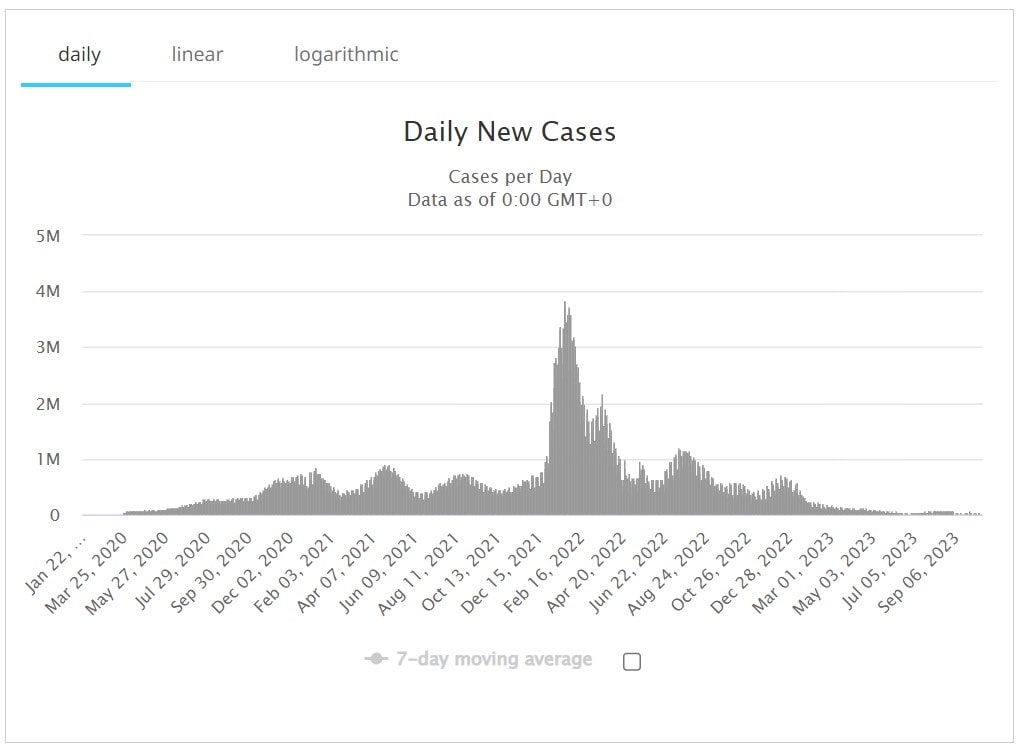
Saying that the outbreak of COVID-19 changed the world is an understatement. It rocked industries to the core, altered the way we conduct business, and forced people into changing their daily routines. And while modern technology provides plenty of benefits, which we’ll outline in a moment, don’t get us wrong. The eruption of the virus was a terrible thing. It led to the deaths of millions and caused temporary or permanent damage to who knows how many. So, don’t forget that while we focus on the positive indicators of how technology is helping in COVID-19.
Quick Answer for How Technology Helped in COVID-19
Technology played a pivotal role in the COVID-19 response by enabling remote working and learning, thus limiting the spread of the virus. It also facilitated rapid development and distribution of vaccines, along with contact tracing and health information dissemination which was crucial in managing the pandemic.
What is COVID-19?

Coronavirus, or COVID-19 for short, is a fast-spreading contagious disease that plagued the globe recently in 2019. It is caused by a virus known as SARS-CoV-2. The initial cases were discovered in Wuhan, China, during the last month. However, before there was any optimal response from the authorities, the disease easily spread worldwide. By March 2022, it had already affected over 520 million people and resulted in the deaths of 4 million.

The disease mostly attacked your respiratory systems, although it wasn’t limited to that, especially the later variants. However, its symptoms included the flu or pneumonia. And while most people infected by it showed only some minor symptoms, many died. It was especially lethal for the elderly, or those with pre-existing conditions.
But all was not bleak during the two years the world was fighting COVID-19. We made progress daily, and some technologies shined the most. In fact, many new technologies and methods were propped up during the pandemic, which the following video talks about.
Ways Technology Helped in COVID-19
1. Flow of information
The existence of the Internet made an incredible difference after the epidemic hit. It allowed the official health sources across the world to publish the newest changes and findings, for one. Also, access to a large population made statistics and studies more accurate. As a result, governments became more effective at monitoring and reporting data, and imposing and modifying policies on a daily, sometimes even hourly basis.
Citizens also had an easier time staying up to date by accessing the latest information via government-run websites. Many countries also implemented lightweight smartphone apps, pushed social media announcements, or sent SMS notifications. Simultaneously, the influx of official information helped outshine an equally large stream of false information that rose out of ignorance or fear.
2. Finding drugs
Exchanging information globally, without delay, affected ways technology is helping in COVID-19 in two major ways:
Professionals
Digital conferences allow hundreds of reputable doctors worldwide to present a thesis, give opinions, debate and conclude things jointly, leading to the discovery of helpful drugs. Additionally, AI (Artificial Intelligence) had a role in these methods:
- Datasets. Created via AI, which scans relevant research papers at rapid speeds, gaining an understanding of viral protein structures. The algorithm can then be trained via machine learning to propose potentially beneficial contents of drugs (later vaccines).
- AlphaFold. A project of Allen Institute for AI and Google DeepMind. It’s a revolutionary system that predicts 3D structures of proteins based on their genetic sequence.
- Atomic 3D maps. Breakthrough made by the researchers from the National Institutes of Health and the University of Texas at Austin. The map can display isolated spike protein, a part of the virus that attaches and infects human cells, which helps predict its permutations.
Regular people
People could donate computing power from their devices (computers, laptops, smartphones) to aid the search for the COVID-19 vaccine via a supercomputer that predicted spike protein mutations. The project that made it possible was named Folding@home and created by researchers at Stanford University.
3. Detection and diagnosis
Here’s how modern technology helps COVID-19 detection and diagnosis:
Professionals
A clear sign technology is helping in COVID-19 can be witnessed during every medical professionals’ workday. They’re lined up 6 feet apart, waiting to take a photo of a QR code taking them to a daily screening survey. The questions help them recall experiencing any symptoms since they’ve previously left work. If they’re asymptomatic, a nurse uses an infrared thermometer to check body temperature and clear them for work. They use a smart card to get through the front door, and then only enter rooms the system allows them to. This limits exposure to the virus if an infected person doesn’t know it.
Civilians
Instead of hogging the already limited space at hospitals, civilians can:
- Talk to a chatbot. Using the same technology as screening devices, chatbots use natural language processing capability to ask patients a series of questions. Not only can this ascertain their symptoms and exposure, but also direct them to the nearest hospital with vacancies.
- Schedule a visit. After online registration, a patient can schedule visitation from a nurse in protective gear. A physician monitors the exam from a tablet the nurse wears and can request further testing besides checking vital signs and collecting a nasal swab.
- Take a drive-through test. Same as above, but safer. Patients remain in their cars instead of houses and only have to roll down their windows briefly, limiting close contact.
4. Medical history and clinical care
We discussed how technology is replacing jobs, and mentioned medical technology under method 5. We’d like to highlight monitoring and interacting with patients remotely as specifically valuable. Doctors and nurses could also administer drugs remotely where applicable, which benefits high-risk patients. Speaking of high-risk, AI algorithms are now capable of using OCR to convert medical documents into text and create a digital database containing patients’ medical history.
Al can also identify parameters that make the patient in peril of clinical deterioration. And, through AI-based risk assessment, algorithms can make early diagnoses and suggest treatments that would benefit the specific patient.
5. Population tracking
While invasive, population tracking through facial recognition (even with the mask on!) is necessary to keep us safe. In this case, searching and identifying infected individuals, and determining who they’ve been in contact with. Afterward, the system can double-check if the infected individual remained in quarantine. Moreover, it can warn them they broke the rules.
For example, an AI solution by a Chinese company named Baidu can screen up to 200 people per minute. It can even simultaneously detect changes in their body temperature while they’re moving.
6. Vaccination
Modern technology is responsible for a revolutionary mRNA vaccine that doesn’t use a live or weakened version of the virus. Instead, they instruct our bodies to produce a spike protein. This triggers an immune system response and gets rid of the mRNA instructions when the antibodies appear.
Also, mass vaccination would’ve been an organizational disaster without technology, and would significantly elongate the time needed to achieve collective immunity. With it, people can sign up, schedule and finish vaccination safely, and get notified when the next round is due. Also, laboratory serology tests show antibodies in our blood, confirming the vaccine worked.
7. Social distancing
Here are 2 ways technology is helping in COVID-19 by allowing social distancing:
Contactless delivery
Contactless delivery is pivotal for the delivery of vaccines, medications, protective gear for healthcare professionals, and bare necessities (food, water, sterilization, COVID-19 test kits) for both hospitals and citizens. In China, instead of humans keeping a physical distance, they use autonomous robots, cars, and drones.
Remote work/studying
This allows employees and students to fulfill their obligations from seclusion. Technology in education and the workplace is also responsible for reducing the negative worldwide economic effects of COVID-19 without compromise in isolation of humans.
Technological Trends Observed During the COVID-19 Pandemic
As most of us already know, we were able to cope with the pandemic due to the bravery of our first responders and medical professionals, who, despite the risk of contamination, gave their very best every day. However, we should not forget the technologies that also played a huge part in fighting the virus, as mentioned below:
1. Robots for deliveries
The virus transformed online shopping into a necessity, rather than a mere convenient option. Even after the pandemic was over, many online portals and platforms continued to provide services, and were adopted, even in countries where their presence was minimal.
But online shopping also requires the delivery of purchased products, which was undertaken by robots during the pandemic, to prevent the contagious disease from spreading. Countries like the US and China spearheaded a logistics change where they adopted robots or drones for their delivery systems.
2. Contactless Payments
It comes as no surprise that contactless payments also rose during the pandemic. While some countries, such as India, already had a few digital platforms for contactless payments, COVID-19 drove others to incorporate it as soon as possible. The pandemic saw the rise of digital wallets, or e-wallets and virtual cards. Digital payments have since become more advanced as they facilitate a much faster shopping experience.
3. Work From Home Culture
Another technological revolution that took place during the COVID-19 pandemic was the rise of the work-from-home culture. Since many countries were observing a strict lockdown, their economies were virtually halted. Thus, the government took action and asked the companies to allow employees to work from the safety of their homes.
Schools and colleges also adopted remote learning solutions. It saw a huge increase in the sale of VPNs and other remote working technologies and a culture that, even today, is being observed as more and more people are set on working from their homes.
4. Rise of the Telehealth Industry
Telehealth also played an important role during COVID-19. Since patients were stuck in their homes, they weren’t able to access healthcare services. Thus, they turned to telehealth in order to consult their doctors online, mostly on Zoom calls. It was further aided by wearable health trackers that allow doctors to keep track of their patients’ conditions and chatbots.
The pandemic was full of such technological advancements and cases, which is why we have taken the time to create the following table:
| Technology | Description | Impact on COVID-19 |
|---|---|---|
| Telehealth | Healthcare solutions over a telephone or online communication channel | It prevented contact and allowed patients to contact their doctors. |
| Online Shopping | E-commerce platforms that sell various products online | Allowed people to shop for necessities from the confines of their homes. |
| Contactless Payments | Digital payment solutions like an e-wallet or virtual credit or debit cards. | Cash also had a chance to carry the COVID virus, so e-wallets were optimal for preventing the spread of the virus without crippling the economy. |
| Robotics | A field that utilizes self-moving machines for various tasks | Robots were used not only in hospitals and medical centers, but also in logistics and home deliveries. |
| E-Pharmacy | An e-commerce platform excelling in the sale ofpharmaceuticals | Helped patients with their medicines by allowing them to place an order online |
| PPE | Safety Equipment | It is rather self-explanatory, as PPE kits were mandatory during COVID. |
| Remote Working Solutions | A subculture where office employees work from their homes. | By using remote working solutions like the VPN, many people no longer have to commute to work during the COVID and can earn their living, safely. |
Sources
- COVID-19 WHO – https://www.who.int/health-topics/coronavirus
- COVID Statistics – https://www.worldometers.info/coronavirus/
- About COVID – https://www.cdc.gov/coronavirus/2019-ncov/your-health/about-covid-19.html